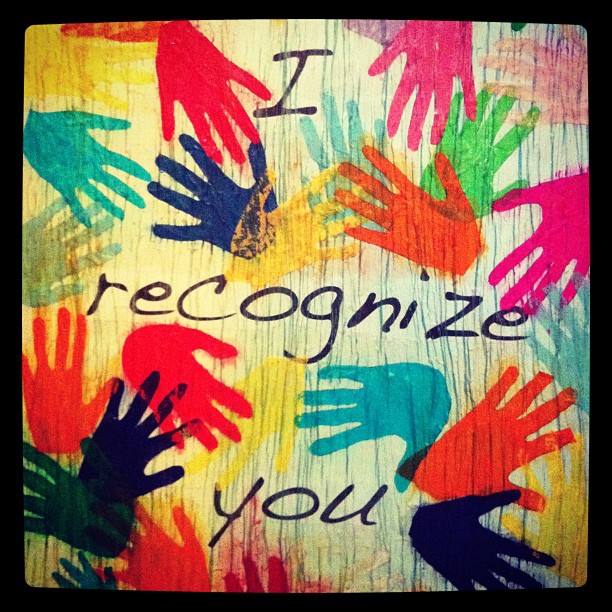Abundance of Life in Community
Sometimes we don’t recognize that which can save us.
Sometimes we don’t recognize people for who they are.
When Mary was weeping at the tomb, she didn’t recognize Jesus when he appeared to her. He was the one she wanted more than anything. But when she saw him, she only saw a gardener—which wasn’t really him.
To get her attention, he called her by name. In being recognized, she recognized him. This is how it is with human beings sometimes. In being recognized, in being called by name, we suddenly become more present.
When the disciples were walking down the road to Emmaus, they didn’t recognize Jesus, even after he walked with them for awhile, teaching and sharing with them. It was only when they sat down to dinner and Jesus broke the bread that their eyes were opened and they recognized him.
In knowing and calling each other by name, in breaking bread together, we can become awake and aware of each other as individuals and as people with distinct identities. When we step outside our blinding grief or fear or whatever it is that keeps us isolated or in conflict, we see and are more deeply bound to one another in community.
“Salvation” as Jesus and his contemporaries often spoke of it meant a wholeness of life, justice, and communal and personal health and well-being. In this sense, our salvation depends upon the survival of the world.
While we are a planet filled with many different people-groups, cultures, ages, sexual orientations, languages, genders, traditions, religions, and spiritualities, we also share in common our human identity and our planet.
This piece represents our commitment to recognizing the Christ in each other, the divinity and the full humanity of each person. This is a commitment to practicing resurrection. Recognizing each other changes everything.
Practice Resurrection. Recognize Jesus. Recognize divinity and humanity in each person. Practice and practice and practice it.
Related Scripture
Luke 24: 10-11
The women who went to the tomb were Mary Magdalene, Joanna, Mary the mother of James, and several others. They told the apostles what had happened, but the story sounded like nonsense, so they didn’t believe it.
John 20: 11-18
Mary stood outside near the tomb, crying. As she cried, she bent down to look into the tomb. She saw two angels dressed in white, seated where the body of Jesus had been, one at the head and one at the foot.
The angels asked her, “Woman, why are you crying?”
She replied, “They have taken away my Lord, and I don’t know where they’ve put him.”
As soon as she had said this, she turned around and saw Jesus standing there, but she didn’t know it was Jesus.
Jesus said to her, “Woman, why are you crying? Who are you looking for?”
Thinking he was the gardener, she replied, “Sir, if you have carried him away, tell me where you have put him and I will get him.”
Jesus said to her, “Mary.”
She turned and said to him in Aramaic, “Rabbouni” (which means Teacher).
Jesus said to her, “Don’t hold on to me, for I haven’t yet gone up to my Father. Go to my brothers and sisters and tell them, ‘I’m going up to my Father and your Father, to my God and your God.’”
Mary Magdalene left and announced to the disciples, “I’ve seen the Lord.” Then she told them what he said to her.
Artwork created by Grace Commons
Group collaboration with Nanette Sawyer
Allison Sichling and
Maggie Wagner
Mixed media, images and fabric
